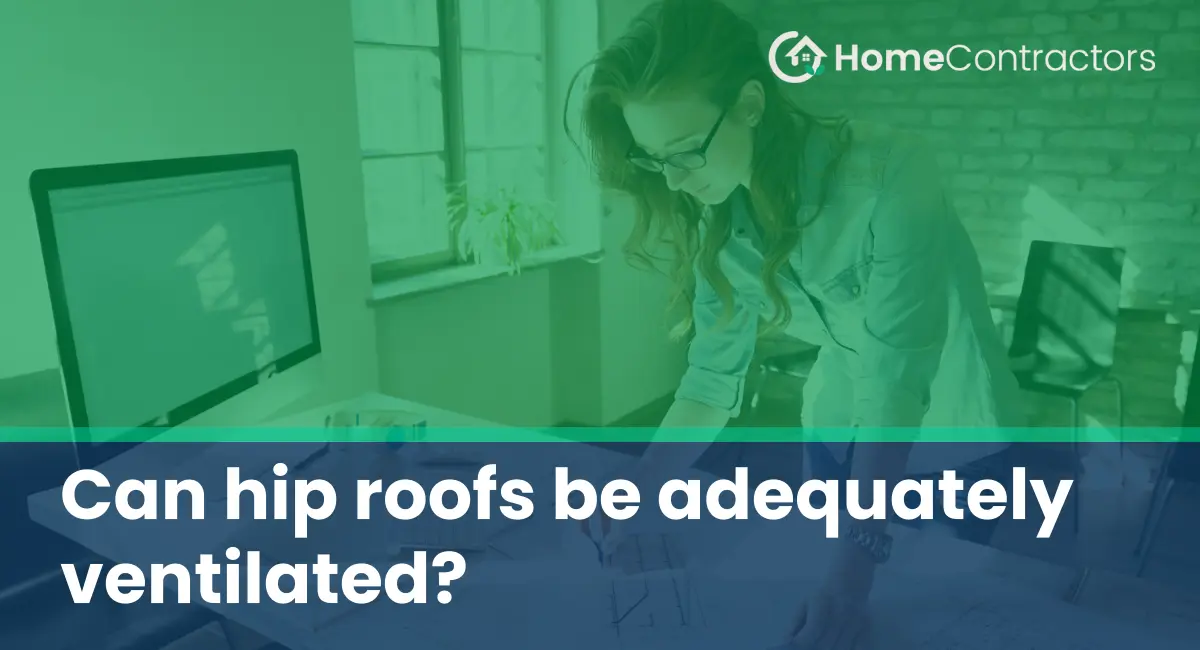When it comes to roofing, proper ventilation is essential for maintaining a healthy and comfortable living space. Adequate ventilation helps regulate temperature, remove excess moisture, and prevent damage to the roof and the home. One common roofing style, known as a hip roof, presents some challenges when it comes to ventilation. In this article, we will explore the intricacies of hip roof ventilation and discuss whether it can be adequately achieved.
Understanding Hip Roofs
A hip roof is a style of roofing that features sloping sides and ends, forming a ridge at the top. Unlike a gable roof that has two static sides and a peak, a hip roof has four sloping sides, which converge to a ridge. This design provides increased stability, durability, and resistance against strong winds. However, the unique structure of a hip roof complicates the process of ventilation.
Ventilation Challenges
One of the primary challenges in adequately ventilating a hip roof is the absence of gable ends. Gable roofs have vertical walls on the sides, which naturally provide an outlet for hot air and moisture. This allows for easy installation of ventilation systems such as gable vents or attic fans. In contrast, hip roofs lack these vertical walls, making it more challenging to create effective ventilation pathways.
Ridge Vents: The Ideal Solution
While hip roofs might pose ventilation challenges, there are effective solutions available. The most common and reliable solution is the installation of ridge vents. A ridge vent is a ventilation system placed along the entire ridge of the roof, allowing hot air to escape through its angled openings. Ridge vents work in conjunction with soffit vents, which are installed underneath the eaves of the roof. Soffit vents allow fresh air to enter the attic, creating a continuous flow of air when combined with the ridge vents.
Benefits of Ridge Vents
Ridge vents offer several advantages for adequately ventilating hip roofs:
- Energy Efficiency: Proper ventilation helps regulate temperature, reducing the strain on heating and cooling systems. This can lead to energy savings and lower utility bills.
- Moisture Control: Adequate ventilation prevents the buildup of excess moisture, which can contribute to the growth of mold and mildew. By eliminating moisture, ridge vents protect the attic and the overall structure of the roof.
- Increased Roof Lifespan: Proper ventilation prevents the accumulation of hot air, which can damage the shingles and underlayment. By reducing heat buildup, ridge vents contribute to a longer lifespan for the roof.
- Improved Indoor Air Quality: Effective ventilation eliminates stagnant air, reducing the risk of poor air quality, allergens, and odors in the living space.
Alternative Ventilation Options
In cases where ridge vents might not be suitable or feasible, there are alternative ventilation options available for hip roofs. These include:
- Turbine Vents: Turbine vents are installed on the roof and rely on wind power to create airflow. As the wind blows, it causes the turbines to spin, drawing hot air out of the attic. While effective, turbine vents are often recommended in areas with consistent winds for optimal performance.
- Roof Louvers: Roof louvers are static vents that are placed along the roof’s slope to allow hot air to escape. However, they require proper sizing and placement to ensure efficient ventilation.
- Powered Attic Fans: Attic fans are electrically powered fans that can be installed to improve ventilation. They work by drawing hot air out of the attic and are often used in combination with soffit vents for optimal airflow. However, powered attic fans require electricity and ongoing maintenance.
While hip roofs present ventilation challenges, they can be adequately ventilated with the right solutions. Ridge vents are the ideal option, providing consistent and efficient airflow in combination with soffit vents. However, alternative options such as turbine vents, roof louvers, and powered attic fans can also be employed to ensure proper ventilation in hip roofs. By prioritizing ventilation, homeowners can maintain a comfortable, energy-efficient, and healthy living environment while protecting the longevity of their roof.
